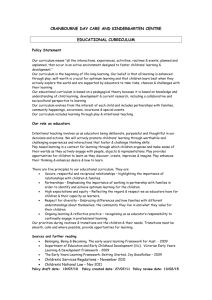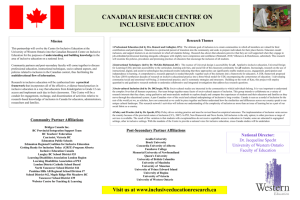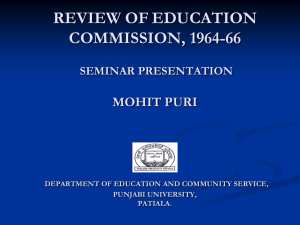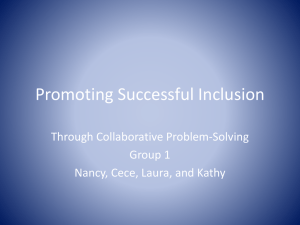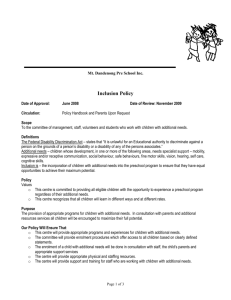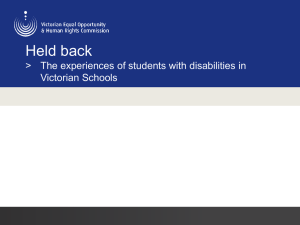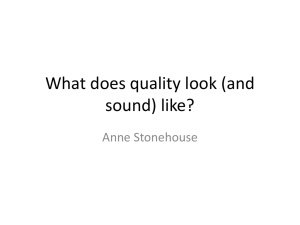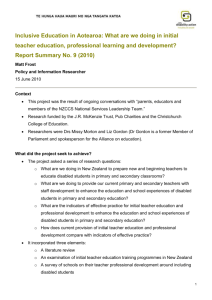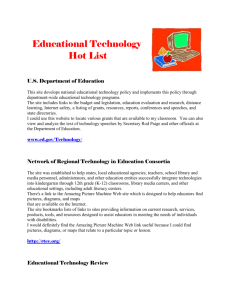How does inclusion relate to quality practice?
advertisement
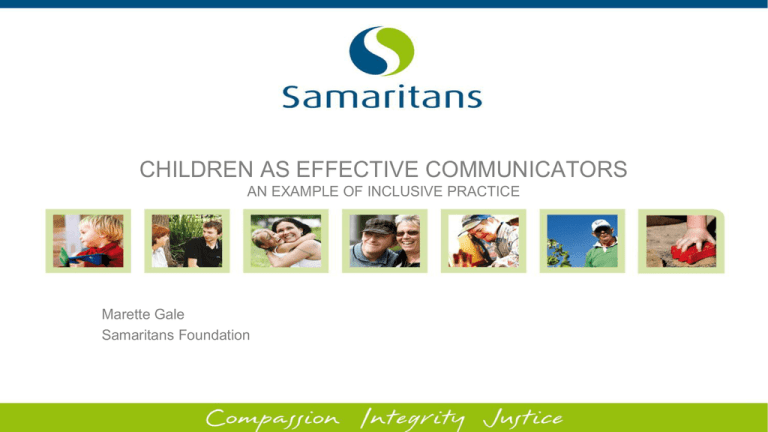
CHILDREN AS EFFECTIVE COMMUNICATORS AN EXAMPLE OF INCLUSIVE PRACTICE Marette Gale Samaritans Foundation How does inclusion relate to quality practice? Early childhood education is guided by several important national frameworks: • National Quality Framework (NQF) setting national benchmark for the quality of education • Belonging, Being and Becoming – The Early Years Learning Framework for Australia – identifying children as co-collaborators of their learning Inclusive Education • The right to an inclusive education is articulated in: o Convention on the Rights of the Child http://www.unicef.org/crc/ o Convention on the rights of persons with a Disability https://www.un.org/disabilities/default.asp?id=150 o National Disability Strategy (NDS) 2011 http://www.cornlaw.gov.au/Details/C2013C00022 o Disability Standards for Education 2005 http://www.cornlaw.gov.au/Details/F2005L00767 legal Obligations for inclusive education • These legal obligations include ensuring the right of every child who experiences disability to education on the same basis as any child not labelled disabled. SCAN Program Supporting Children with Additional Needs • The effective inclusion of children with additional needs in preschool requires an understanding of the specific needs of each child. • SCAN assists preschools to meet the associated requirements to ensure the inclusion of the child in the education program and the physical environment of the preschool Children as Effective Communicators • Pilot Project in the Hunter and Mid North Coast • Review Findings • Tuned-In Consulting o Carolyn Cousins – May 2014. Children as Effective Communicators Innovative response to identified needs: o Preschools report working with high numbers of children with language delays o Frustration at long waiting times for speech Pathology o Inability to provide early intervention and prevention o Inability to access prompt assessments Innovative Response Program designed to provide targeted intervention to: o Utilise and resource Educators to improve outcomes o Equip and resource Educators to undertake early intervention o Speech pathologist working in Partnership in preschool environment The Process From One to One intervention - Traditional Individualised speech therapy TO Capacity Building Building on existing activities and educator skills: Speech and language extension Options built into existing programs TO Inclusion Speech and Language Issues as part of continuum Modification of activities to suit child irrespective of (dis) ability. Benefits o Inclusion for all children o Positive and strength based approach o Assists educators build communication skills o On site o Capacity building of Educators o Recognising the Educators existing knowledge and experience Key learning: Speech Pathologists o Stretched them to work with children across normative range o Developed appreciation for the skills of Educators o Required adaption of traditional methods Key Learning: Educators and Preschools o Recognised their existing expertise and ability to incorporate further communication ideas into programs o Encouraged reflection o Required openness to new ideas and feedback Contact Information Marette Gale Community Service Manager mgale@samaritans.org.au Kerry Rowlandson SCAN Co-ordinator krowlandson@samaritans.org.au


